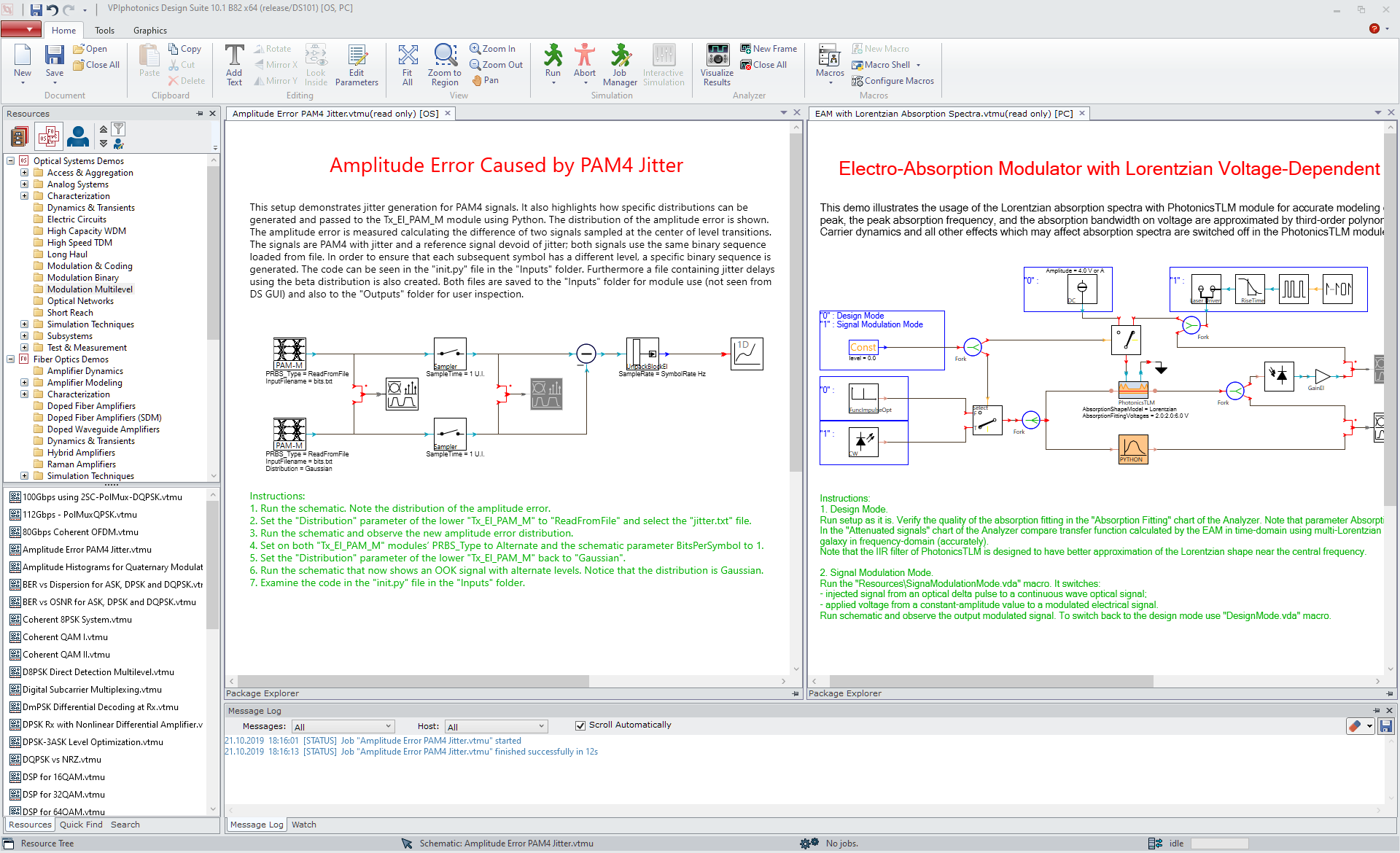VPIphotonics Design Suite Version 10.1 provides access to professional application-specific simulation tools and several pluggable toolkit extensions with common usability, design process and data analysis capabilities.
Version 10.1 offers advances in simulation and design capabilities for applications using
Forward Error Correction (FEC), Digital Signal Processing (DSP), PAM4 modulation, multimode VCSELs, integrated
optical modulators and more.
VPIphotonics' software solutions have proven to be beneficial in winning and successfully
performing many research and design projects – for commercial companies as well as for
educational institutions. With the improved capabilities provided in Version 10.1, our
modeling suite is set to deliver the same outstanding results in the future.

Photonic Design Environment (PDE) of Version 10.1
Jitter for PAM4 – the electrical PAM-M transmitter Tx_El_PAM_M has been enhanced to include jitter with Gaussian and uniform distribution, or an arbitrary distribution loaded from a file.
Irregular repeat-accumulate (IRA) LDPC codes – the LDPC codes from the DVB-S2 standard are now supported using normal (64800 bits) and short (16200 bits) frames. A custom parity-check matrix for the IRA codes can be provided from a file.
New and improved DSP algorithms – the DSP_Lib module, providing access to a library of DSP algorithms, has been updated to include the following enhancements:
New KramersKronig_Rx algorithm – Processes a directly detected digital data stream and applies the Kramers-Kronig relations to extract phase and amplitude information from the signal.
New FrequencyShift algorithm – Applies a specified frequency shift on 2D or 4D signals.
New SSBdemodulation algorithm – Performs demodulation of a single sideband (SSB) subcarrier.
Nyquist_Filter algorithm updated – The Nyquist filter can now not only be used as baseband but also as a bandpass filter.
The special Python module vpi_tc_ptcl which allows interaction between a cosimulation script and the simulation engine was extended by introducing new functions: mux(), filter_opt(), and resample(). These functions reuse algorithms realized in the simulation engine and take into account Noise Dynamic and Multiple Frequency Band signal features automatically.
Inverse Jones Matrix – the TestSetJones module has been enhanced to provide the possibility to calculate and output inverse Jones and Mueller matrices.
The VCSEL_MM and SolverVCSEL_MM modules have been updated to include the following enhancements:
Modes calculation for step-index circular waveguides.
Linear gain model in addition to the logarithmic model.
Temperature dependence of the transparency carrier density.
New parameter for the temperature at which the VCSEL emission frequencies, gain peak frequency, and gain coefficient are specified.
New model for the VCSEL junction voltage as function of the injection current and junction temperature. The functional dependence can be specified directly using either a Python expression or an input file.
Improved phase calculation when thermal effects are enabled.
The PhotonicsTLM module features a new Gain model for the spontaneous emission spectrum shape, an improved implementation of the gain and absorption IIR filters, updated module parameters, and several other enhancements. The Parabolic gain shape fitting and Lorentzian absorption shape fitting can now be visualized and saved to a file. Due to the changes in the PhotonicsTLM module, its simulation results may change (only slightly in most cases). To get the same results as in the previous versions, the new obsolete module PhotonicsTLM_v100 is added (together with the derived galaxies). However, for most accurate simulation results, it is recommended to update your setups using the new PhotonicsTLM module version.
Many new demo examples have been added and existing ones modified to illustrate the functionality and applications of the new features and modules. Version 10.1 provides access to over 870 ready-to-run demo setups now.